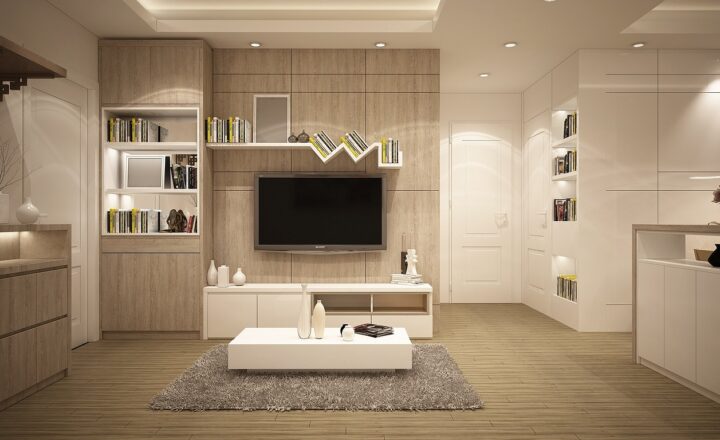The Role of Acoustic Panels in Improving Home Sound System Quality
November 13, 2024

In an era where home entertainment systems have become more sophisticated than ever, ensuring optimal sound quality is a priority for audiophiles and casual listeners alike. High-definition televisions, surround sound systems, and powerful speakers are all part of the modern home experience, but without proper acoustics, even the best equipment can underperform. This is where acoustic panels come into play.
1. Understanding Acoustics and Sound Quality
Before diving into the transformative power of acoustic panels, it’s essential to understand the basics of acoustics. Acoustics is the science of sound, including how it travels, reflects, and interacts within a space. Sound waves bounce off walls, ceilings, and floors, and these reflections can create echoes, reverberation, and other distortions that detrimentally affect audio clarity.
Common acoustic issues in homes include:
- Echo: Resulting from hard surfaces that reflect sound waves, making them overlap and create a muddy audio experience.
- Standing Waves: These occur in rectangular rooms where sound waves reinforce each other, leading to uneven sound quality at different spots in the room.
- Bass Buildup: Low-frequency sounds tend to concentrate in certain areas, causing a booming or muffled effect depending on the speaker’s placement and room dimensions.
Installing acoustic panels can effectively mitigate these issues, creating a more balanced and enjoyable listening environment.
2. What Are Acoustic Panels?
Acoustic panels are specially designed materials that absorb sound waves, minimizing reflection and improving the overall acoustics of a space. These panels can be made from various materials, including foam, fiberglass, and fabric-wrapped materials. Acoustic panels come in various shapes, sizes, and colors, allowing you to customize both their functionality and aesthetics to fit your home decor.
The primary functions of acoustic panels include:
- Sound Absorption: Acoustic panels absorb sound waves, reducing the overall noise level in a room and eliminating echoes.
- Sound Diffusion: Some acoustic panels are designed to scatter sound waves rather than absorb them, helping to create an even sound field and reducing dead spots in a room.
- Aesthetic Appeal: Available in various designs, acoustic panels can enhance the aesthetic of your home while improving sound quality.
By integrating acoustic panels into your listening space, you can create a more accurate sound reproduction and an immersive auditory experience.
3. How Acoustic Panels Improve Sound Quality
The effectiveness of acoustic panels in improving sound quality can be attributed to their ability to control sound waves. Here’s how they contribute to a better audio experience:
Reducing Echo and Reverberation
Echoes can drastically alter how music and dialogue are heard. Acoustic panels minimize these reflections, delivering clearer audio. You’ll find that voices become more intelligible, and musical instruments sound sharper and less muddled.
Controlling Bass Frequencies
Bass frequencies can easily overwhelm a room. Acoustic panels help equalize bass response, ensuring that these low-end sounds are well-defined and not boomy or overpowering. This balance allows viewers to experience their favorite movies and music as the creators intended.
Improving Overall Sound Clarity
In rooms without proper acoustic treatment, sound waves can overlap and create a confused mix. Acoustic panels separate these sounds, ensuring that each element can be heard distinctly. You’ll be able to experience the nuances in music and the subtleties in film soundtracks more fully.
4. Placement of Acoustic Panels
The strategic placement of acoustic panels is critical for achieving the best results. Here are some tips to optimize their arrangement:
- First Reflection Points: Identify the first reflection points in your room, which are the surfaces sound waves hit before reaching your ears. Place panels at these locations to maximize absorption.
- Corners: Bass tends to collect in corners, so using corner bass traps can help manage low-frequency buildup effectively.
- Back Wall and Ceiling: If you have space, consider adding panels to the back wall and ceiling to further enhance sound quality throughout the room.
By carefully planning the placement of acoustic panels, you can create a home theater or listening room that delivers unparalleled sound quality.
5. Types of Acoustic Panels
Acoustic panels come in various forms, each suited to different applications and design aesthetics. Some of the most common types include:
- Foam Panels: Lightweight and easy to install, these panels are designed to absorb high-frequency sounds and can be cut to fit in various spaces.
- Fabric-Wrapped Panels: These panels consist of a sound-absorbing core wrapped in fabric, providing both absorption and aesthetic appeal. Available in numerous colors and textures, they can blend seamlessly into your decor.
- Diffusers: Unlike absorptive panels, diffusers scatter sound waves, helping to create a lively and well-balanced acoustic environment. They can be essential in larger rooms where strict absorption could make the space feel too dead.
- Bass Traps: These specialized panels are designed to control low-frequency sound in corners, where bass waves tend to build up, ensuring a balanced audio reproduction throughout the room.
By choosing the right mix of acoustic panels based on your specific needs, you can drastically enhance your home sound system’s performance.
6. DIY vs. Pre-Made Acoustic Panels
When looking to enhance your home sound quality, you might wonder whether to purchase pre-made acoustic panels or make your own.
DIY Acoustic Panels:
Creating your own acoustic panels can be a cost-effective solution. You can design custom sizes, shapes, and colors and choose materials that suit your acoustic needs. Common materials used include:
- Owens Corning 703 Fiberglass Panels – known for their acoustic properties and relatively low cost.
- Wooden frames and fabric – allowing you to build a visually appealing acoustic product suited to your decor.
Pre-Made Acoustic Panels:
Purchasing pre-made panels can save you time and effort. They come in a variety of ready-to-install designs that are effective and aesthetically pleasing. Most manufacturers offer a range of styles designed for home use, from simple foam panels to elaborate fabric-wrapped solutions.
The choice between DIY and pre-made comes down to your budget, skills, and personal preferences. No matter which route you take, ensuring you have the proper acoustic treatment is essential for achieving the best sound quality in your home.
Conclusion
Acoustic panels play a crucial role in improving the quality of sound systems in homes. By controlling reflections, absorbing unwanted frequencies, and enhancing overall clarity, they help create an audio environment that audio enthusiasts and casual listeners alike can appreciate. Whether you opt for DIY solutions or invest in pre-made panels, employing acoustic treatment in your home audio setup is a step toward achieving the sound quality you’ve always desired.
Improve your listening experience today by considering the integration of acoustic panels into your home entertainment system.








